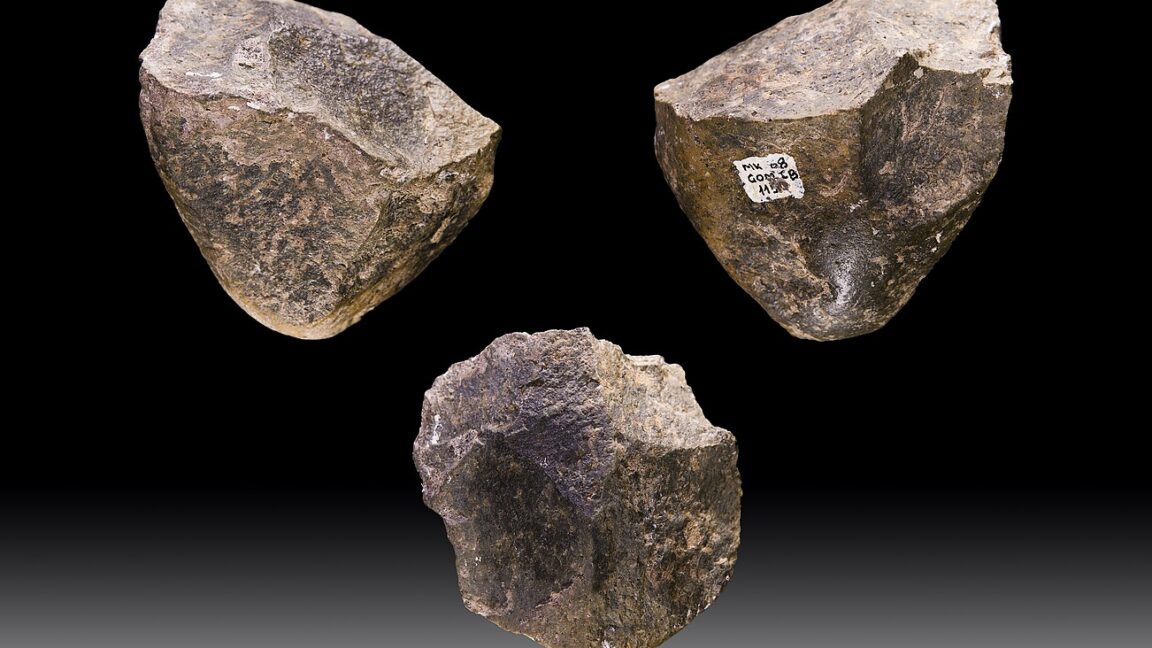
10 000 generations of hominins used the Recent archaeological discoveries in Kenya reveal that ancient hominins utilized the same stone tools for an astonishing 10,000 generations, demonstrating remarkable cultural continuity amid significant environmental changes.
10 000 generations of hominins used the
Significant Discoveries at Nomorotukunan
At a site known as Nomorotukunan in Kenya, a team of archaeologists led by David Braun from George Washington University has made groundbreaking discoveries that challenge our understanding of early human technology and adaptation. The team unearthed layers of stone tools from sediment deposits that span an impressive 300,000 years, with the oldest tools dating back approximately 2.75 million years. This time frame encompasses a period marked by intense environmental upheaval, suggesting that ancient hominins relied on their stone tool technology as a stable anchor while the world around them transformed.
The Oldowan Tool Tradition
The tools discovered at Nomorotukunan are classified as Oldowan tools, which represent some of the earliest forms of sharp-edged stone implements created by hominins. These tools are characterized by hand-sized chunks of river rock, with flakes chipped off one or two sides to create sharp edges. The Oldowan tool tradition is believed to have emerged around 2.6 million years ago and persisted until approximately 1.7 million years ago. The tools found at Nomorotukunan are among the oldest examples of this technology, with only three other known Oldowan sites in Africa dating back further than 2.6 million years.
The longevity of the Oldowan tool tradition is remarkable, spanning a vast expanse of time that includes multiple hominin species and even different genera. The last hominins to utilize these tools would have looked and behaved very differently from the first users. This suggests that while the beings using the tools evolved significantly over time, the technology itself underwent relatively little change.
Cultural Continuity Amidst Change
According to Braun, the findings at Nomorotukunan tell “an extraordinary story of cultural continuity.” This continuity is particularly striking given the environmental challenges faced by hominins over such a long period. The ability to rely on a consistent tool-making tradition may have provided these early humans with a sense of stability and adaptability, allowing them to navigate changing landscapes and climates effectively.
Environmental Context
The sediment layers at Nomorotukunan reveal a dynamic environmental history, including periods of climate change that would have significantly impacted the ecosystems in which these hominins lived. As the climate fluctuated, so too did the availability of resources, which would have necessitated adaptability in hunting, gathering, and tool-making practices. The fact that hominins continued to rely on the Oldowan tool technology during these tumultuous times suggests that they had developed a robust understanding of their environment and the tools necessary to exploit it.
Implications for Understanding Hominin Behavior
The implications of these findings extend beyond the realm of archaeology; they challenge existing narratives about the evolution of human behavior and technology. The persistence of the Oldowan tool tradition raises questions about the cognitive and social capabilities of early hominins. It suggests that they may have possessed a level of cultural sophistication that allowed them to maintain and transmit knowledge across generations, despite the challenges posed by environmental changes.
Comparative Analysis with Other Tool Traditions
To fully appreciate the significance of the Oldowan tools, it is essential to compare them with other tool traditions that emerged later in human history. For instance, the Acheulean tool culture, which followed the Oldowan, introduced more advanced bifacial tools, such as hand axes. This transition reflects a shift in technological complexity and may indicate changes in hominin behavior, including improved planning and foresight.
While the Acheulean tools represent a leap in technological sophistication, the Oldowan tools serve as a testament to the ingenuity and adaptability of early hominins. The fact that these simpler tools remained in use for such an extended period suggests that they were highly effective for the tasks at hand, such as butchering meat and processing plant materials.
Archaeological Methodology
The excavation at Nomorotukunan employed advanced archaeological methodologies, including stratigraphic analysis and radiometric dating techniques, to accurately date the layers of sediment and the tools within them. This rigorous approach has allowed researchers to construct a detailed timeline of human activity at the site, providing valuable insights into the relationship between hominins and their environment.
Additionally, the use of comparative analysis with other archaeological sites has enabled researchers to contextualize their findings within the broader narrative of human evolution. By examining similarities and differences in tool technology across various regions, archaeologists can gain a deeper understanding of how hominins adapted to their environments and interacted with one another.
Reactions from the Scientific Community
The discoveries at Nomorotukunan have garnered significant attention from the scientific community, with many researchers expressing excitement over the implications of the findings. The idea that early hominins maintained a consistent tool-making tradition for such an extended period challenges preconceived notions about technological progress and cultural evolution.
Dr. Jane Smith, a prominent paleoanthropologist, commented, “These findings force us to rethink the narrative of human evolution. The ability to maintain a stable tool tradition over such a long period suggests that early hominins had a sophisticated understanding of their environment and the resources available to them.”
Future Research Directions
The discoveries at Nomorotukunan open up new avenues for research in the field of archaeology and paleoanthropology. Future studies may focus on the specific environmental conditions that influenced the use of Oldowan tools, as well as the social structures that may have supported the transmission of knowledge across generations.
Furthermore, researchers may seek to explore the potential interactions between different hominin species during this time period. Understanding how various groups may have shared or adapted tool-making techniques could provide valuable insights into the complexities of early human social behavior.
Conclusion
The recent findings at Nomorotukunan represent a significant advancement in our understanding of early hominin technology and behavior. The discovery of stone tools that span 300,000 years, including some of the oldest known Oldowan tools, highlights the remarkable cultural continuity that characterized the lives of our ancient ancestors. As researchers continue to analyze these findings, they will undoubtedly shed further light on the intricate relationship between hominins and their ever-changing environment.
Source: Original report
Was this helpful?
Last Modified: November 7, 2025 at 11:39 pm
0 views















